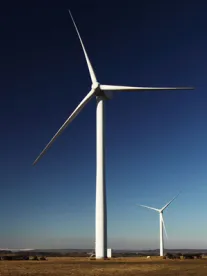On December 19 and 20, 2019, the President of the Energy Regulatory Office (URE) announced the results of the renewable energy purchase auctions held between November 25 and December 13, 2019. The auctions included both existing and new renewable energy sources (RES) installations. Obviously, onshore wind farms and photovoltaics (PVs) garnered the most interest. The existing sources auctions were also dedicated to biogas, biomass and biofuels, however, attention paid to them was negligible.
Large Onshore Wind Farms and PVs Auction Results
The auctions for onshore wind farms and PVs of up to 1 MW were the largest, with the former dominating as anticipated.
As many as 80 producers entered the auction, and 101 offers won, offering to sell 78 TWh (68% of the maximum volume) for PLN16.2 billion (approximately €3.6 billion, which constituted 50% of the funds earmarked for this purpose). The lowest accepted bid amounted to PLN162.83/MWh (approximately €38/MWh), while the highest was PLN233.29/MWh (approximately €55/MWh). One could assume that the highest bids were those for several large scale PVs. According to the rules, 20% of the most expensive offers were automatically rejected.
Offered Prices Lower Than Current Average Energy Prices in Poland
Therefore, one ought to notice that even the most expensive offers amounted to more than last year’s auction prices, however still less than current average energy prices on commodity market in Poland. It goes without saying that the auction results will, in the long run, be beneficial in terms of the Polish Power Exchange prices.
One should also note that the large onshore projects entering the auction failed to use up the entire pool of funds offered.
10H Rule, and Then What?
Industry analysts anticipate that the energy volume offered at the auction will translate into construction of wind farms of the total capacity of 2,000 MW. Nonetheless, it is also important to note that this year’s winning projects obtained permits before May 2016, i.e., prior to the Proximity Act’s effective date, and they are not always based on the most efficient technological solutions.
Jadwiga Emilewicz, Minister of Development, has been recently quoted as saying that in the foreseeable future, the government will start deliberating on a more liberal proximity act, which is currently highly restrictive in terms of erecting new wind farms in Poland, not to mention the most efficient (and the tallest) turbines. The amendment would facilitate using more modern (taller) turbines and, perhaps, decreasing even lower electricity price from wind farms.
1 MW PVs Auction Results
The auction for power plants below 1 MW was dominated by PVs. As part of the auction, a maximum of 11.45 TWh had been anticipated to be sold for no more than PLN4.2 billion. As many as 260 producers entered the auction, and 1,044 offers were submitted, out of which, 759 won.
Present PVs Auction Offers Lower Than a Year Ago
The lowest accepted bid amounted to PLN269/MWh (approximately €63/MWh), while the highest was PLN327/MWh (approximately €76/MWh). The total of the energy sold was 11.43 TWh at the price of PLN3.6 billion (approximately €847 million). From what we can observe, the entire volume was used, while the prices offered were below the average reference prices. By way of a comparison, last year’s auction prices ranged from PLN289,99/MWh (approximately €68/MWh) to PLN364/MWh (approximately €86/MWh).
We anticipate that the energy volume bought at the auction will translate into construction approximately 800 MW of new PVs.
Floor Opened for Potential M&A Transactions
We believe that in the months to come, we may expect to see increased activity on the wind farms and PVs portfolios M&A market. Surely some investors, whose onshore and PVs projects have already had their prices approved for the next 15 years, will be considering making such moves.
Co-author: Rafał Pytko



 />i
/>i
